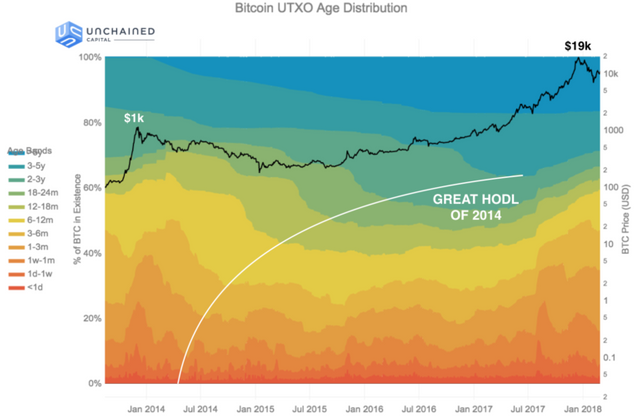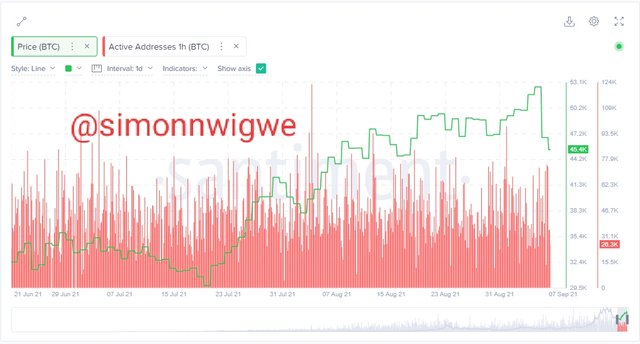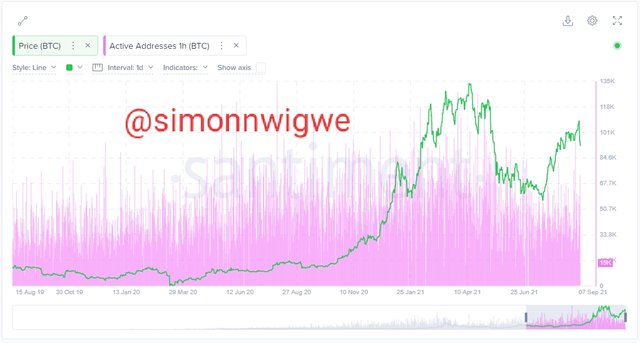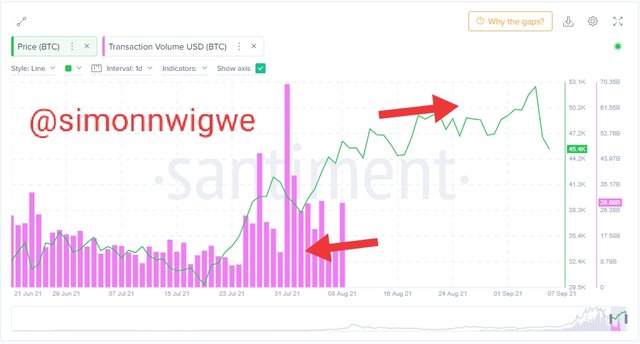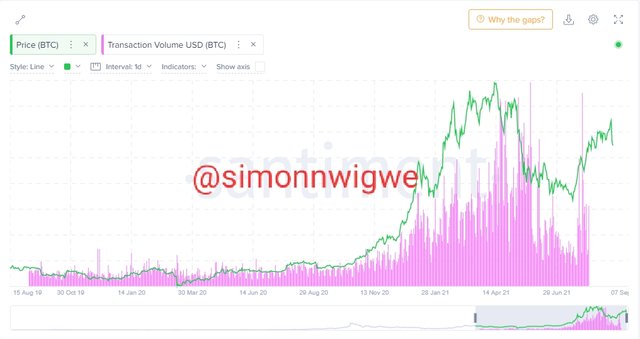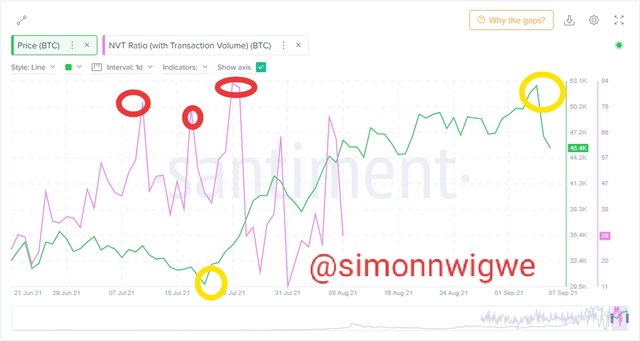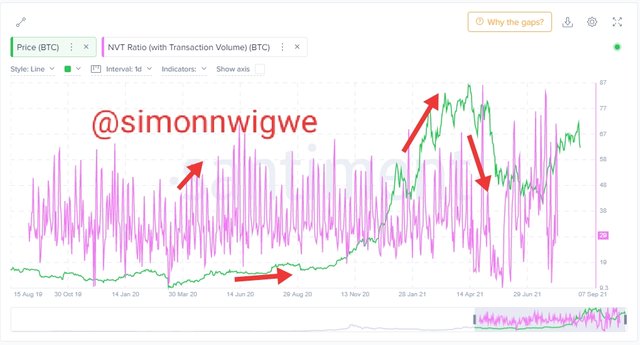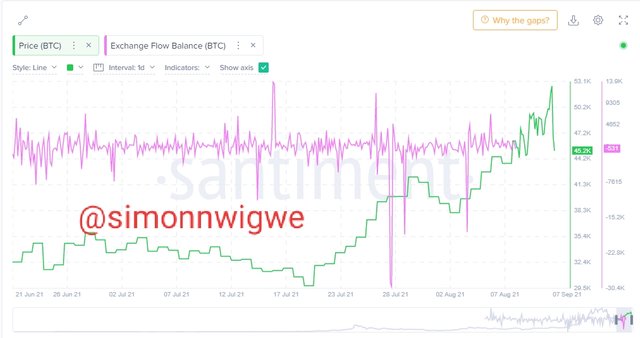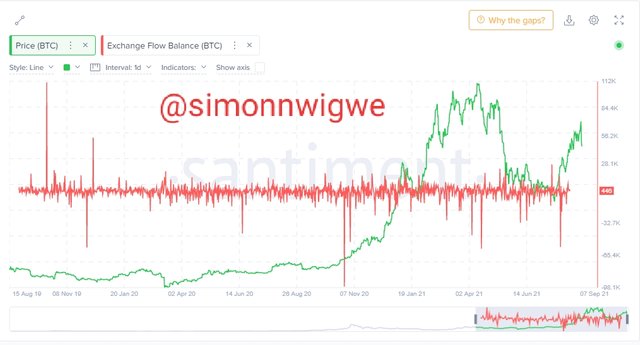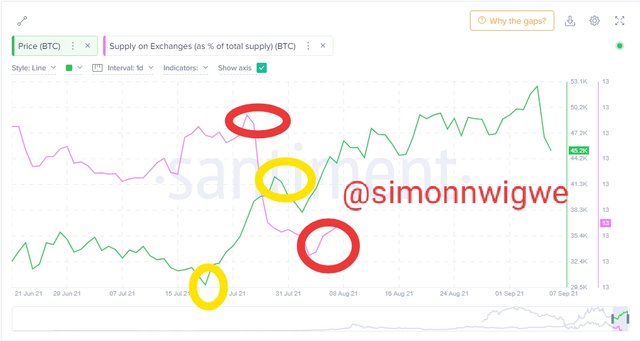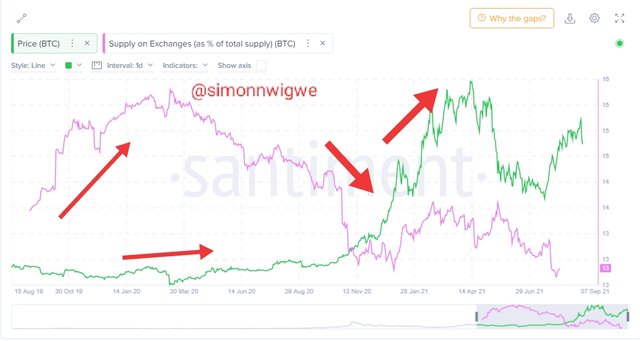Crypto Academy Season 4 | Advance course - Task 1: Onchain Metrics

Hello guys,
It is yet another opportunity for us all to learn. I am so delighted to be part of this very season crypto academy courses. I have attended the lecture delivered by our dear professor @sapwood where he explained extensively on the topic Onchain Metrics, so I will be presenting my home work task in this very blog. Have fun as you read through my post.
It is yet another opportunity for us all to learn. I am so delighted to be part of this very season crypto academy courses. I have attended the lecture delivered by our dear professor @sapwood where he explained extensively on the topic Onchain Metrics, so I will be presenting my home work task in this very blog. Have fun as you read through my post.
(1) What is a HODL wave, how do you calculate the age of a coin(BTC, LTC) in a UTXO accounting structure? How do you interpret a HODL wave in Bull cycles?
What is a HODL wave?
In the crypto world, the word HODL is often use by traders. The essence of this word is to encourage traders not to sell their coins when ever they see the coin either dropping or raising. It's important to state here that the word HODL can simply be referred to as "Hold on for dear life".
When talking about the age of a coin we can not help but to mention the word HODL wave, this is a pattern that the coin moves after a rally. That is this talks about how long a coin is held in a particular wallet address without moving it. This implies that a HODL wave occurs when a particular coin say (bitcoin) is been held in a particular wallet for at least 1-2 years or more. The HODL wave uses different colours to represent the time and period in which this transaction are been carried out. For example, recently transacted BTC are represented using Red, Orange and Yellow (warm colors) whereas BTC that has not transacted for a while is represented by Light Yellow, Green and Blue (colder colors).
How do you calculate the age of a coin(BTC, LTC) in a UTXO accounting structure?
As we have learnt at the course of this very lecture that the age of a coin does not refer to when the coin was initialy mined but it is calculated based on the time it has spent in a particular wallet address without moving out and this is done using the UTXO accounting structure. The word UTXO stands for unspent transaction output. So the amount of coin which is in the wallet that has not been spent for a while is calculated and then the age is derived from there.
How do you interpret a HODL wave in Bull cycles?
To interpret a HODL wave in a bull cycle is some how not very easy. Lets take bitcoin into consideration because there are some minor HODL waves that usual takes place at the cause of time. For the sake of this studies we will be taking into consideration how to interpret a HODL wave using the three major HODL wave in bitcoin since the invention of the coin. The first is called the genesis HODL, the second is called the HODL of 2011 and the third is called the great HODL. Let's see each of them and their respective curve below.
The Genesis HODL: In this first HODL wave, which took place from January 2009 - June 2011, as you can see from the image above the price of bitcoin here raised from $0 - $33. Remember that this is the initial stage of bitcoin so no transactions was really recorded but due to the activities of Satoshi and other miners in accumulating the coin, that gave rise to the price of the coin.
The HODL of 2011: This happens to be the second major HODL wave and it took place from June 2011 - December 2013, as you can see from the image above the price of bitcoin here raised from $33 - $1k. Here in this phase there was a lot of up and down as regards to the price of bitcoin but it finally pull through. Here miners who had earlier acquired the asset started selling it and that gave others opportunity to have the said asset.
The Great HODL: This happens to be the third major HODL wave and it took place from December 2013 - December 2017, as you can see from the image above the price of bitcoin here raised from $1k - $19k. Before this great rise came in the price also dropped again and it was fluctuating till around June 2017 when the price finally bounced back.
(2) Consider the on-chain metrics-- Daily Active Addresses, Transaction Volume, NVT, Exchange Flow Balance & Supply on Exchanges as a percentage of Total Supply, etc, from any reliable source(Santiment, Coinmetrics, etc), and create a fundamental analysis model for any crypto[create a model for both short-term(up to 3 months) & long-term(more than a year) & compare] and determine the price trend (or correlate the data with the price trend)w.r.t. the on-chain metrics? Examples/Analysis/Screenshot?
Daily Active Adresses: In the on-chain metrics, the daily active address represent the number of active Bitcoin address based on movement. So active address are the address which comes into existence within the a certain period. This address are use to receive or send tokens. Below I will be presenting these addresses using both short term and long term scale.
a. Short term scale (3 Months)
Here, I took into consideration three month analysis beginning from June 21 2021 to September 2021 and from my observation, the price of bitcoin was increasing with the number of active address increasing as well. In September, the price of bitcoin is seen around 53.1K whereas the active address is seen at 45.4k.
b. Long term scale ( 2 years)
Here, I took into consideration three month analysis beginning from August 15 2019 to September 2021 and from my observation, the number of active users and price of bitcoin was low in 2019 and started raising in November 10 2020. It started dropping around May 2021. In September, the price of bitcoin is seen around 101K whereas the active address is seen at 67.7k.
Transaction Volume: In the on-chain metrics, the transaction volume represent the amount of transaction or the volume of transaction that is carried out in the market. Below I will be presenting these transaction volume using both short term and long term scale.
a. Short term scale (3 Months)
Here, I took into consideration three month analysis beginning from June 21 2021 to September 2021 and from my observation, the price of bitcoin was increasing but the transaction volume stopped movement in August 2021. In September, the price of bitcoin is seen around 45.4K whereas the transaction volume is seen at 28.99B
b. Long term scale ( 2 years)
Here, I took into consideration three month analysis beginning from August 15 2019 to September 2021 and from my observation, both Price and transaction volume where moving in same paste and in November 13 2020 the price and volume started going up together.
Network Value to Transaction Ratio (NVT): In the on-chain metrics, the Network Value to Transaction Ratio (NVT) has high bound and low bound concerning the movement of price. If price is going up or down it is use to indicate it. Higher NVT indicates lower price of BTC whereas lower NVT indicates high price in BTC. Below I will be presenting these NVT using both short term and long term scale.
a. Short term scale (3 Months)
Here, I took into consideration three month analysis beginning from June 21 2021 to September 2021 and from my observation, the price of bitcoin was increasing but the NVT stopped movement in August 2021. From the graph you will notice the higher the NVT the lower the price of BTC and verse varse.
b. Long term scale ( 2 years)
Here, I took into consideration three month analysis beginning from August 15 2019 to September 2021 and from my observation, both Price and NVT are always moving against each other. Higher NVT shows lower price.
Exchange Flow Balance: In the on-chain metrics, the Exchange Flow Balance talks about the flow of the market be it in bearish or bullish format. Below I will be presenting these Exchange Flow Balance using both short term and long term scale.
a. Short term scale (3 Months)
Here, I took into consideration three month analysis beginning from June 21 2021 to September 2021 and from my observation, the price of bitcoin was increasing as the amount of exchange keeps increasing. But I notice a negative signal generated when the price of BTC is 45.2K the exchange was seen to be -531.
b. Long term scale ( 2 years)
Here, I took into consideration three month analysis beginning from August 15 2019 to September 2021 and from my observation, the Price of BTC was on an increase still but this time exchange flow is positive and gave 446.
Supply on Exchange as a percentage of Total supply: In the on-chain metrics, the Supply on Exchange as a percentage of Total Supply talks about the inflow of coins into an exchange. This means if coins are HODL without supplying it then the value will increase because of it's scarcity. Below I will be presenting these Supply on Exchange as a percentage of Total supply using both short term and long term scale.
a. Short term scale (3 Months)
Here, I took into consideration three month analysis beginning from June 21 2021 to September 2021 and from my observation, the higher the supply the lower the price and the lower the supply the higher the price. From the graph when price was at 45.2K the supply was at 13.
b. Long term scale ( 2 years)
Here, I took into consideration three month analysis beginning from August 15 2019 to September 2021 and from my observation, the supply was very high from 15 August 2019 and the price is very low but when the supply dropped in November 2020 the price pushed up significantly.
My Observation
Having seen the reaction of price with the various parameter which was taken into considerations in both short and long term scale, there is no doubt that the value of coin is supported by the onchain metrics. We have seen that when the supply is much the value of the coin deprecitae drastically.
(3) Are the on-chain metrics that you have chosen helpful for short-term or medium-term or long term(or all)? Are they explicit w.r.t price action? What are its limitations? Examples/Screenshot?
To me I think the on-chain metrics are always good for long term investment. This is because the signal gotten while using the long term is more clear and reliable. So to use the on-chain metrics use the time frame of at least two years so that you will have a clear and better signal. I discovered that many false signal may be generated most especially when use in a short or medium term from as in the case of Exchange flow balance. So in other to have a better and reliable result, go for long term.
The on-chain metrics are quite very explicit with respect to price. Most of the on-chain metrics moves in same direction with price and others tell you when the price is high and when the price is low. This information will enable traders to know when there is much liquidity in the market and when to enter their market as well.
Some of the few limitations I observed at the course of this research is that most signal generated by the on-chain metrics is usually unclear and hence does not give a clear picture of what the market is portraying. Another limitation I observe is the network where the factor taking into consideration can be altered and the price still remain unchanged.
Conclusion
The on-chain metrics is really a very important tool to be used by traders to analyse the price, volume etc movement of any crypto asset. This will enable traders to know when exactly to perform some activities in the market. I have actually learnt a lot including the calculation of the age of a coin and many more. I want to sincerely appreciate the professor in the person of @sapwood for such a wonderful lecture. I do hope to learn more from you shortly.
Sort: Trending
Loading...
[-]
successgr.with (74) 3 years ago

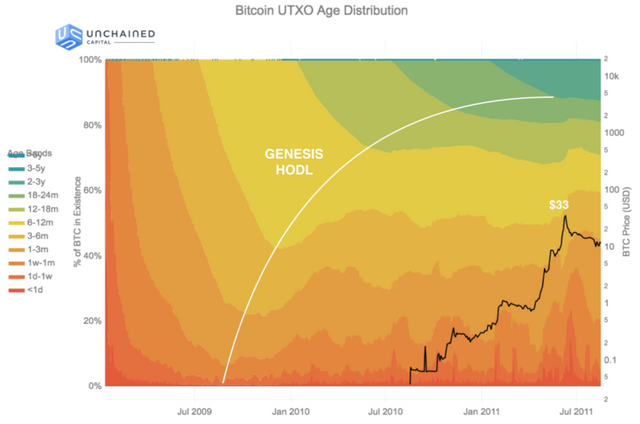
.png)
